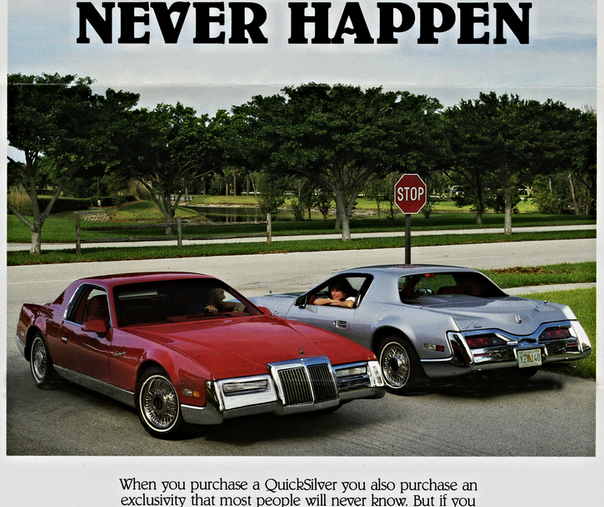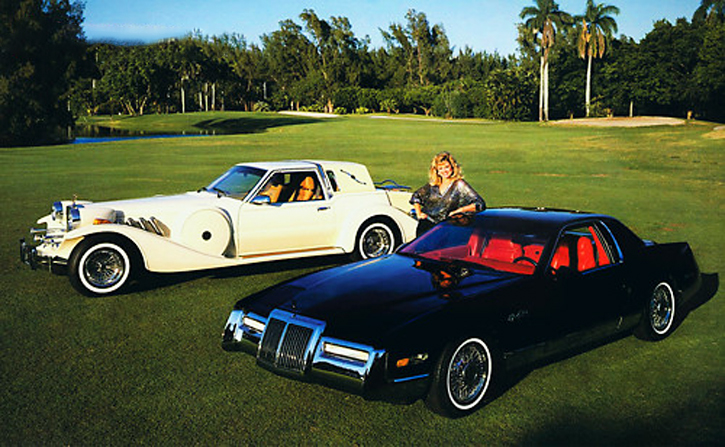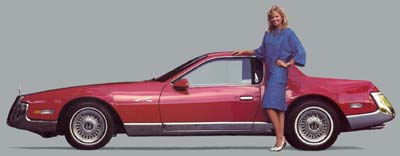
Creepy Or Cool: 1986 Zimmer Quicksilver Coupe
If you look real close you still won’t be able to tell what this car started as. Keep looking. These were an elaborate re-body by Zimmer out of Florida. Florida was a mecca for exploits like this because of all of the boat building and development going on there. Zimmer built retro-trash “neo-classic” classic cars out of fiberglass with varying degrees of embarrassment. But this is the Zimmer Quicksilver coupe, and it is a different animal.
The rest of Zimmer’s mélange tried to look like classic cars

While the rest of Zimmer’s mélange tried to look like classic cars, the Quicksilver took mid-engine 1984 Pontiac Fieros and turned them into retro mid-1970s personal luxury statements. It was like taking a mid-1980s car and turning it into a mid-1960s Riviera or mid-1970s Monte Carlo. But with a mid-engine. And smaller.
The Fiero was chosen because its body integrity was never compromised with body panels removed. That’s because the plastic body panels are attached to a unified inner structure. It was an experiment in mass-producing cars that could have damaged body panels replaced cheaply and easily. Or, could be changed into a completely different-looking car for those owners with short attention spans.
You could drive a Fiero without any body panels and it would run and drive the same as with them. So the Quicksilver took Pontiac’s dare and made a different body. Designed by a GM designer no less. So it eschewed some of the clunky and odd design quirks of kit cars because someone who could actually design actually did design it. His name was Don D.A. Johnson-not to be confused with the actor by the same name. Minus the “DA.”
Most everything that was Quicksilver was fiberglass

The chassis was lengthened 15-inches before being rebodied into a Quicksilver. Everything that was Quicksilver was fiberglass. The massive bumpers were cast out of metal in South Korea. They must have weighed a ton. The added overhangs front and rear added to the 1960s/1970s proportions that the Quicksilver sort of had.
But this wasn’t a kit car. You bought them completely finished which sounds great until you know the price, which was $48,000. In mid-1980s prices. That would be over $121,000 today. For what started as a $7,999 Fiero. Yeah, there was a lot of markup in there. But sometimes that is the price you pay for quality and prestige.
And these Quicksilver coupes were done well. The prestige part? That was in the mind of the owner. Or not. Of course, that price also bought you a much more lavish interior. The dash looked identical to a Fiero, but the rest was what one would hope to expect from a Cadillac or Cordoba. They all came with leather, real wood, and shag carpet in case you don’t believe they were lavish.
The amazing part is that Zimmer found 170 buyers for the Quicksilver

The amazing part is that Zimmer found 170 buyers for the Quicksilver. So they are rare enough to make them collectible, yet not so rare that no one remembers them. Because if you lived in the 1980s you remember them. They had an arresting look that you couldn’t take your eyes off of. Sort of like a field of flowers, or a train wreck. Depending on how you liked it.
We’re not sure whether it stopped being made by 1988 because the Fiero had run its course, or because Zimmer had a hard time flipping Quicksilvers. Either way that was the end of the line for both. Founder Paul Zimmer suffered a heart attack and had to relinquish control of the company. His son Bob sold his shares in Zimmer and bought a dealership. Eventually, the parent company filed for bankruptcy even though the Zimmer car operations were making money. But a form of it is still going on today.
Art Zimmer, who is no relation to the founder and his son, bought the name and rights to what was left. He moved operations to New York, and today builds about 10 or so “Golden Spirit” neo-classics a year. The long four-doors are based on the Lincoln chassis. The two-doors start as Mustangs, so either can be serviced and carry factory warranties by Ford.



